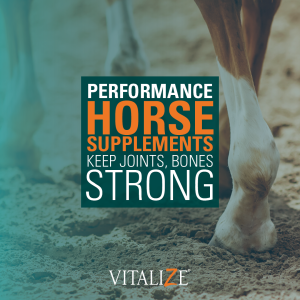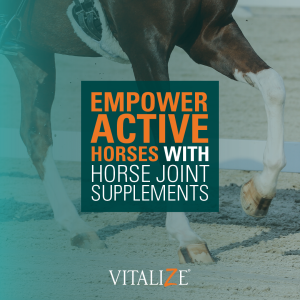
Determining when it’s too hot to ride a horse depends on several factors, including temperature, humidity, the horse’s fitness level and the intensity and duration of the ride. Much like us, horses are susceptible to heat stress. Riding in excessively hot and humid conditions can pose health risks to both the horse and the rider.
So, when is it too hot to ride a horse?
Temperature & Humidity
Pay attention to the temperature and humidity levels, as well as the heat index, which combines temperature and humidity to estimate how hot it actually feels. In general, temperatures above 90°F (32°C) combined with high humidity levels can significantly increase the risk of heat-related issues for horses.
Some equine enthusiasts refer to this cooling efficiency scale to determine if it is too hot to ride. By adding the temperature in degrees Fahrenheit and the percent humidity, they can tell if their horse will cool down efficiently. If the sum is more than 150 or greater, it is typically advisable NOT to ride.
Heat Index
Consider the heat index or “feels like” temperature, which accounts for the combined effects of temperature and humidity on the body’s ability to cool itself through sweating. High heat indices indicate an increased risk of heat stress for horses, especially during physical exertion. The heat index is much more critical than the actual temperature since it takes into account the humidity, which reduces the horse’s natural ability to cool itself.
Fitness Level
When answering “when is it too hot to ride a horse,” you need to consider your horse’s fitness level. Horses that are not accustomed to hot weather or are out of condition may be more susceptible to heat stress. High-performance horses that are ridden every day will be able to handle the heat and humidity more comfortably than those that are only ridden occasionally. Consider gradually acclimating horses to warmer temperatures and building fitness levels over time.
Intensity & Duration of Exercise
Evaluate the intensity and duration of the ride. Avoid strenuous exercise or prolonged rides during the hottest parts of the day, typically between late morning and early evening. Consider scheduling rides during cooler times of the day, such as early morning or late evening.
Signs of Heat Stress
Monitor your horse for signs of heat stress, including excessive sweating, rapid breathing, elevated heart rate, lethargy, stumbling or reluctance to continue exercising.
If the horse exhibits any signs of distress or discomfort, stop the ride immediately and provide appropriate cooling measures. If those cooling strategies don’t seem to work, contact your local veterinarian immediately.
Cooling Strategies
Riders can implement certain cooling strategies to help the horse regulate body temperature and prevent overheating. These include providing access to shade, cool drinking water, and opportunities to rest and cool down during breaks. Fans, misters, or cold-water baths can also help cool the horse’s body temperature.
Consider Rider Safety
Of course, we want you to ensure your horse is safe and well cared for. But it’s equally important to consider the safety and well-being of the rider, as well. Riding in extreme heat can increase the risk of heat-related illnesses for both horses and riders. Stay hydrated, wear appropriate clothing and take breaks as needed to prevent heat exhaustion or heat stroke. If you don’t take care of yourself, you can’t expect to take care of your horse.
Ultimately, use your discretion and prioritize the health and safety of the horse when deciding when it is too hot to ride. Pay attention to weather conditions, monitor the horse’s response to exercise and adjust riding plans accordingly to minimize the risk of heat-related issues. When in doubt, err on the side of caution and choose cooler times of the day or consider alternative activities until temperatures become more favorable for riding.
Vitalize Can Help!
Regardless of if you choose to ride or not during the heat of summer, it is vital to monitor your horse’s health and well-being during times of elevated temperatures. Horses typically begin to experience heat stress anytime the temperature is above 80 degrees Fahrenheit. Therefore, many horses are susceptible to heat stress for extended periods of time. Especially if you live in the southern portions of the United States. Fortunately, Vitalize® has created an innovative product to help manage the impact of heat stress in horses to keep them healthy and performing
Vitalize® Blazin’ is a liquid product for horses designed to support normal recovery from heat stress and exertion. It contains antioxidants to reduce damaging free radicals caused by exertion and heat and AO-Biotics® Amaferm®, a prebiotic research-proven to enhance digestibility. Additionally, it promotes cellular hydration and water retention.
Be Proactive with Vitalize
It’s important to address heat stress in horses as soon as you identify it. But the best way to address the risk is to be proactive with preventative care.
Vitalize Blazin’ is available in two convenient sizes, both a 32- and 64-ounce bottle with easy-to-use pumps. Use as needed during elevated temperature or exertion and administer 2 to 4 pumps (30 – 60 mL) per day based on the intensity of heat and exercise.
We recommend splitting the dose between morning and evening feedings. The best results will be obtained after at least three consecutive days of use, and depending on environmental conditions, the product can be used as long as needed.
Buy Vitalize Now
Have you asked yourself, “When is it too hot to ride a horse?” If the answer is “today,” then today is also a great day to stock up on Vitalize Blazin’.
You can purchase Blazin’ from BioZyme online or through one of our select online retailers. Get your Vitalize Blazin’ and other Vitalize products from your local BioZyme dealer, or wherever Vitalize products are sold.
Do you want to learn more about Blazin’ or other Vitalize products for horse gut and joint health? Read more of our educational blogs or visit our website. Interested in learning more about how to support your horse year-round? Sign up for our newsletter.


